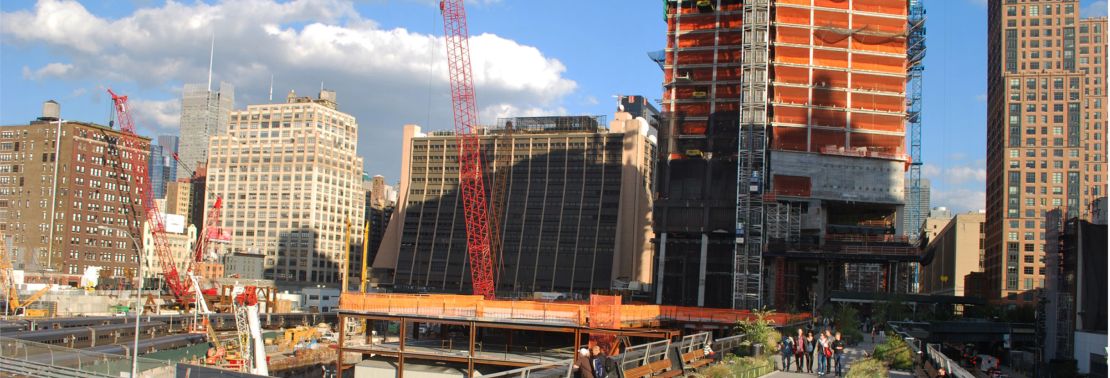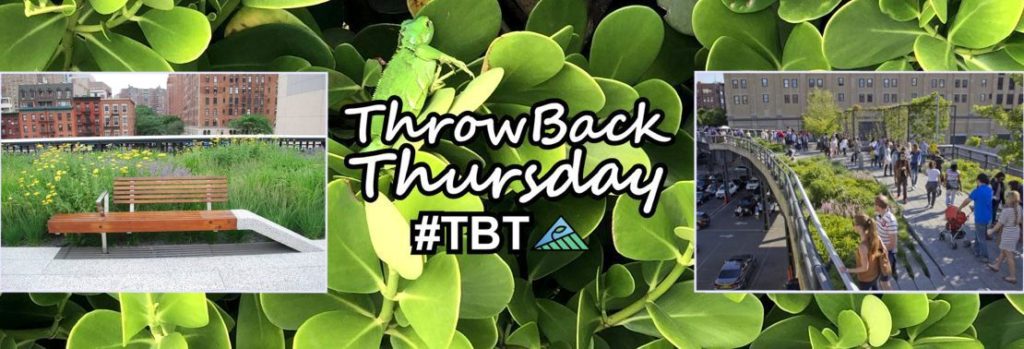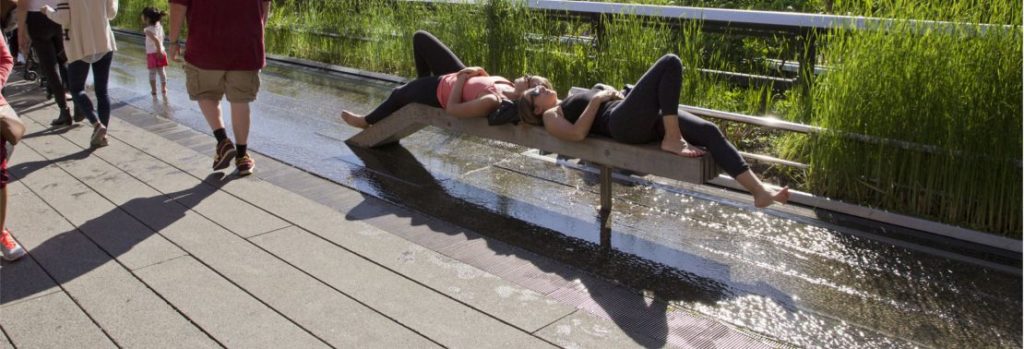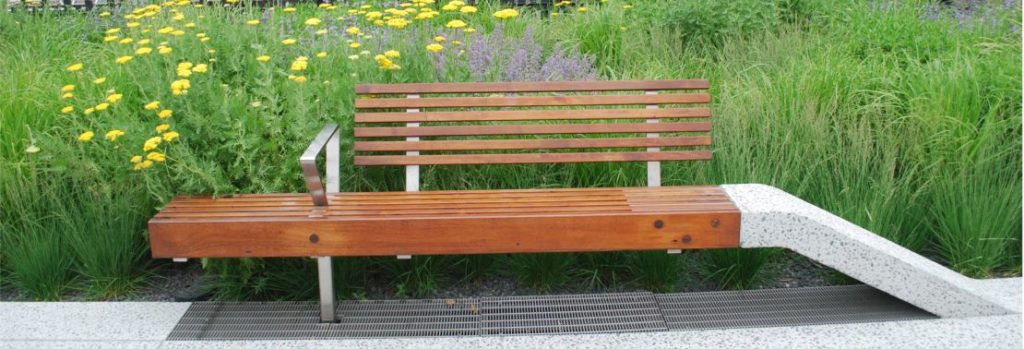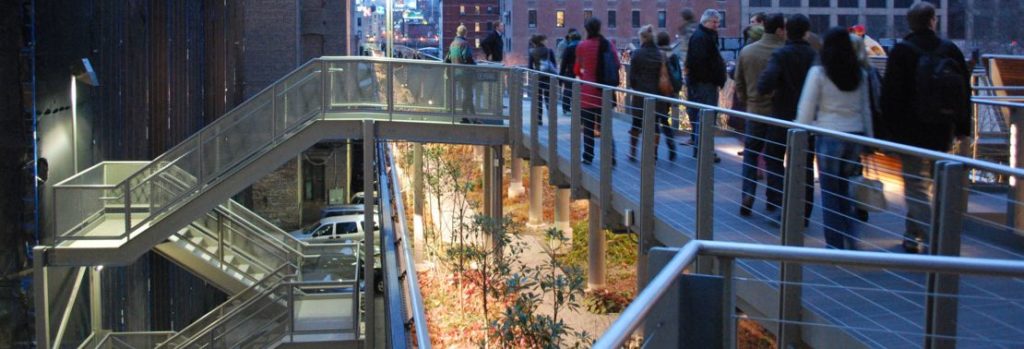A Comparison of the Three Phases of the High Line, New York City: A Landscape Architect and Photographer’s Perspective
“A Comparison of the Three Phases of the High Line, New York City: A Landscape Architect and Photographer’s Perspective” compares Phase One with Phase Two, and describes what is proposed for Phase Three. Design features to be reviewed include the walk system, seat furnishings, plantings, signage and graphics, water feature and drinking fountains, public art, lighting, maintenance and irrigation, and Phase 3. The author also offers suggestions on economic impacts, restrictions and user activities, sustainability, and studies/research.
Originally, due to the length and photo essay nature of the contribution, the series was presented approximately every few weeks in 14 parts between 2013 and 2015; to ensure background information, the Series Introduction is repeated on all.
Part 10 – Economic Impacts
By Steven L. Cantor, Landscape Architect – Originally Posted July 26, 2014
All Photos © Steven L. Cantor Unless Otherwise Noted
Series Introduction
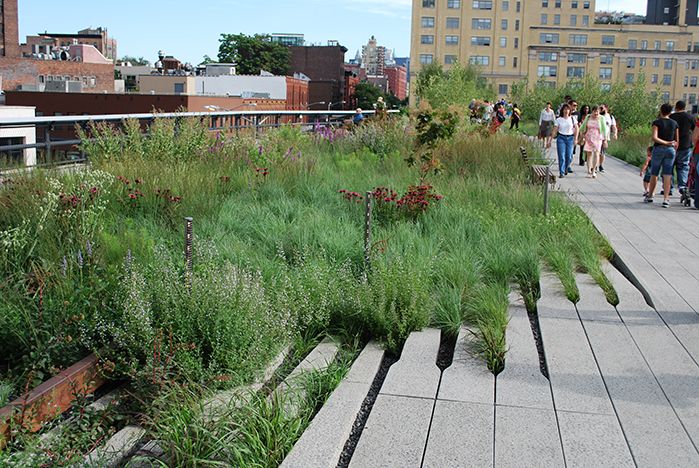
Phase One High Line on July 15, 2009.
Designed by landscape architect James Corner of Field Operations, architect Ricardo Scofidio of Diller Scofidio + Renfro with planting design by Piet Oudolf, the High Line, the remarkable linear park built on an abandoned railroad viaduct in New York City, has been enormously popular.
The design team anticipated how well green roof technology would function and adapt to the viaduct since it could handle at once the huge weight of several fully-loaded trains carrying heavy tonnage. As an intensive green roof, it has very few structural load limits which would curtail use. At peak use times there can be lines of pedestrians waiting to enter with as many as 20,000 visitors per day on weekends.[1]
The High Line has won numerous awards, and in particular several as a green roof, for example, in 2013 and 2010 from the American Society of Landscape Architects, Green Roofs for Healthy Cities in 2011, and in 2010 from the International Green Roof Association. This is a rare public project in which the success of the initial phase contributed to a high level of funding for subsequent phases.
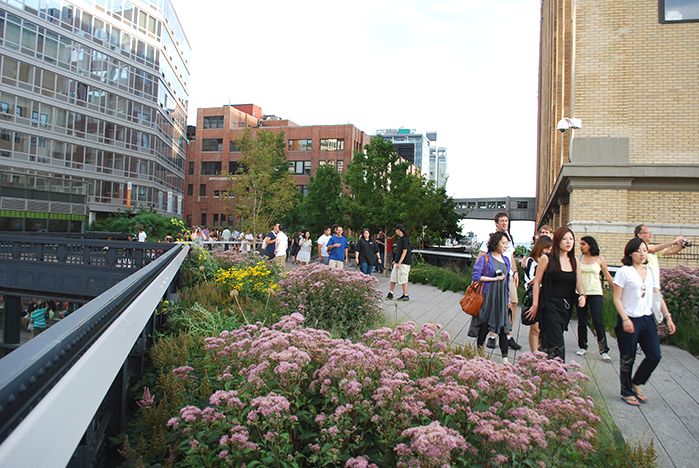
7.16.11.
The High Line has benefited from intense scrutiny as a result of lectures in which the designers were questioned; public hearings, media critiques in newspapers, journals, and blogs; lobbying from specific organizations, such as the Rainforest Coalition; and comments from city government and other public officials.
Improvements or adjustments were implemented to some design elements of the first phase, and significant modifications were done in the second phase. Are these changes aesthetic, appropriate and ethical, and are they consistent with the goals of sustainability? Is the High Line a sustainable design?
Part 10: Economic Impacts Discussion
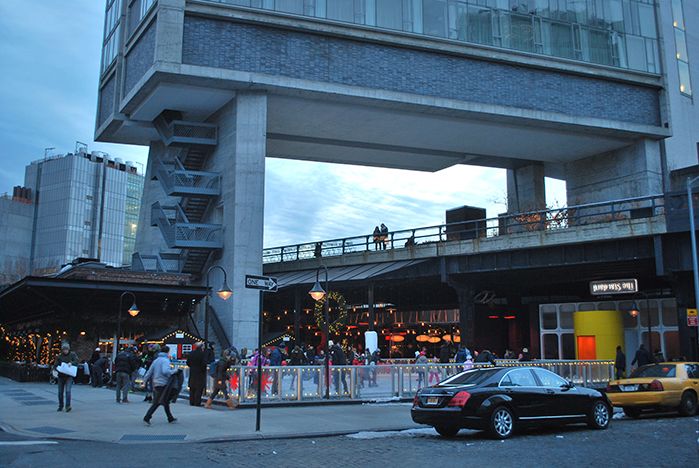
11.30.13.
In 2005, the rezoning of the High Line district (West Chelsea) from industrial to mixed-use with specific guidelines adjacent to the trestle provided incentive for all sorts of diverse development. As a result, the High Line has had a dramatic impact on the Chelsea neighborhood and the Meat Packing District, the two neighborhoods through which the High Line traverses.
Huge numbers of new buildings have been constructed: apartments, restaurants, art galleries, boutiques. Many more are planned.
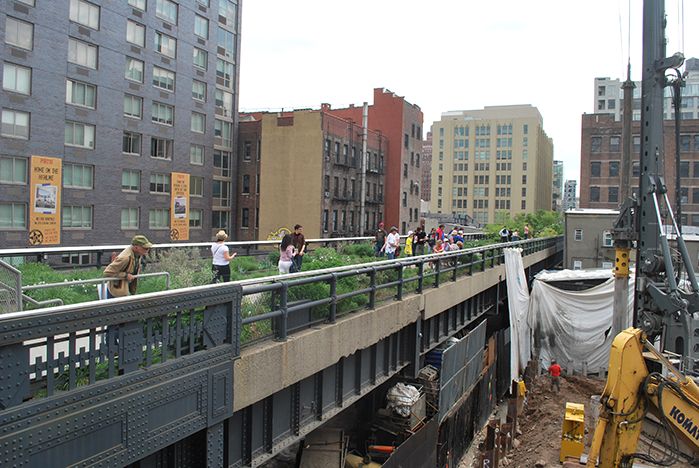
The entire corridor is now lined with new real estate developments, some of which dwarf the High Line. The initial catalyst for urban design is now absorbed in a much larger entity. 5.12.14.
Seen below, 345 Meatpacking is a luxury condominium with green roofs over the entrance canopy and on top of the building at W. 14th Street.
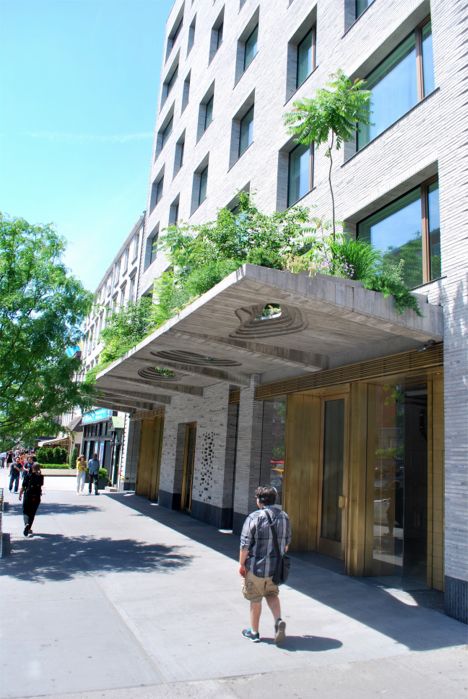
Prominent architects, such as Frank Gehry, Jean Nouvel, Robert A. M. Stern, Neil Denari, and others have contributed major buildings. For example, the new home for the Whitney Museum of Art, the architect for which is Renzo Piano, will be at the Gansevoort entrance to the High Line.
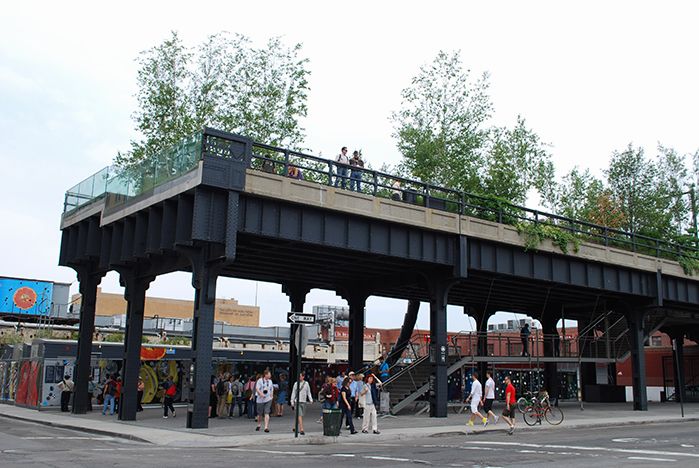
The Gansevoort entrance on 6.11.10.
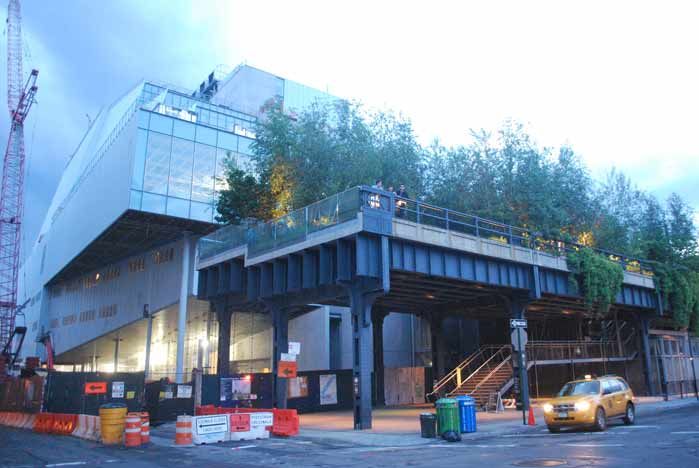
View from Gansevoort looking west towards the Whitney Museum under construction directly behind (west) of the High Line. 5.30.14.
Another example of typical economic trends is The General Theological Seminary, which was on almost a square block between W. 20th and W. 21st and 9th and 10th Avenues. Now operating on one smaller part of this property, to improve its finances the seminary sold different buildings to developers.
The High Line Hotel is now located within the seminary’s former dormitory housing, previously called the Desmond Tutu Center, and sold for $16 million to The Brodsky Organization. Bargain prices for rooms are about $200/night. Some of the seminary buildings are still operating, and retain their historical character. The renovation of the Desmond Tutu Center into a hotel was handled tastefully, preserving the landmarked features.
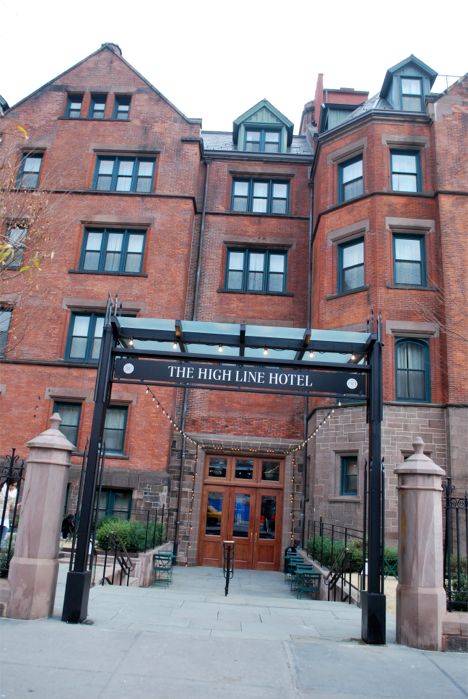
View of The High Line Hotel (former seminary) near W. 20th Street. 12.01.13.
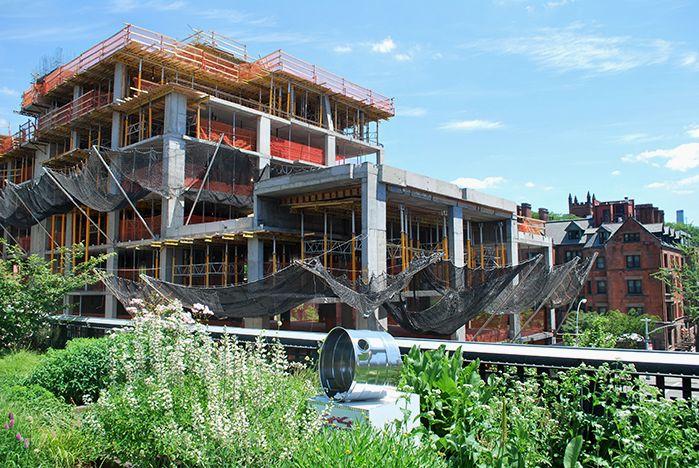
6.08.14.
The former Getty gas station at the northwest corner of 10th Avenue and West 24th Street will be razed in preparation for development of high rise luxury condominiums. Residential development company Shvo, along with Victor Homes, paid $23.5 million — or $855 per foot for its 27,300 buildable square feet, over the asking price of $18.95 million.
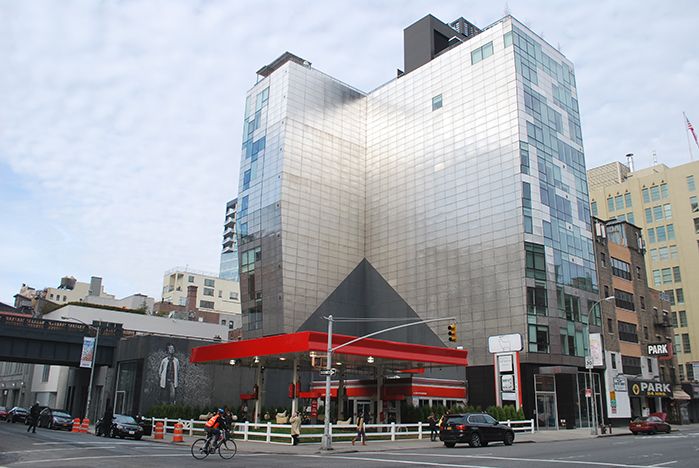
12.01.13.
Additional air rights will raise the final price, which could bring the building up to a total of 41,475 square feet. See more photos of the former Getty gas station from my Part 6 – Public Art Discussion.
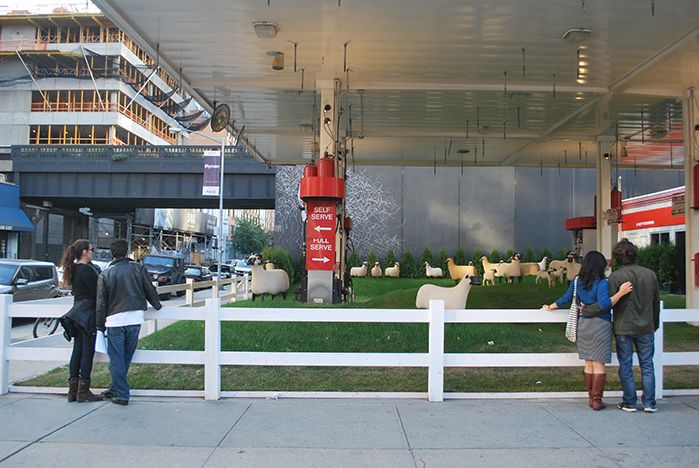
While awaiting development, the Getty gas station hosted a temporary sculpture installation by Francois-Xavier Lalanne called “Sheep Station” from September through 2013. Photo of 10.13.13.
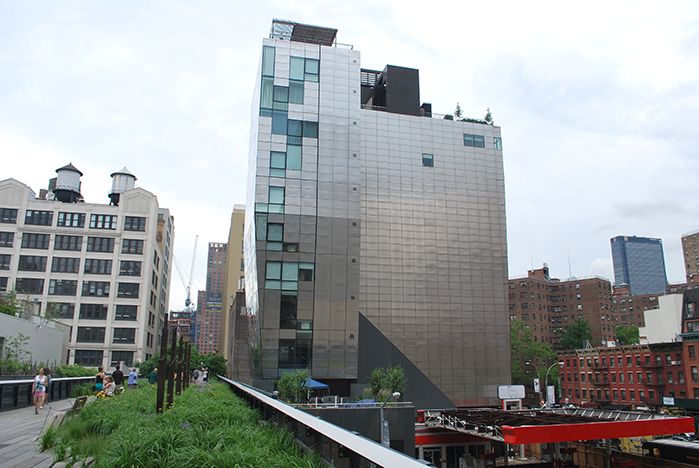
A view above the soon to be demolished Getty gas station, right, from the High Line on 6.19.14.
On a side note, with so much activity, many of the plant materials have adapted well, and are as yet unaffected by construction. With some in shade zones, it is harder to tell.
Gentrification of Chelsea and the Meat Packing District is ongoing. Some have criticized that there has been a large increase in luxury housing and stores that cater to the wealthy.
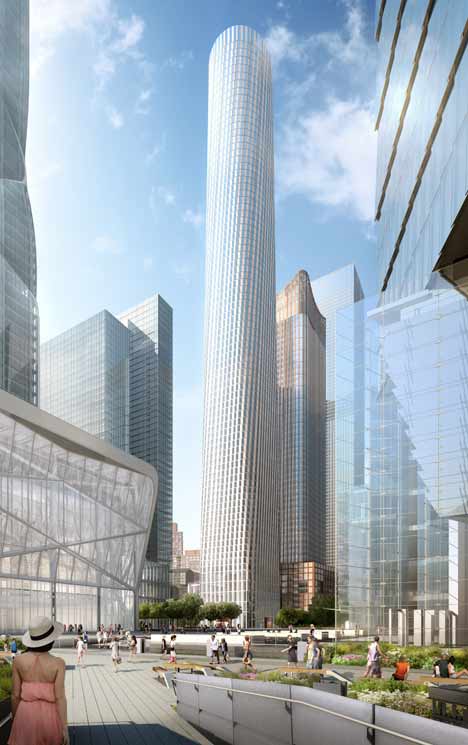
35 Hudson Yards viewed from The High Line. Image courtesy ©Related-Oxford.
Many well-established businesses, such as auto body shops and neighborhood restaurants, have been forced out because they could no longer afford increases in rents for activities that are no longer the focal point of the neighborhood.
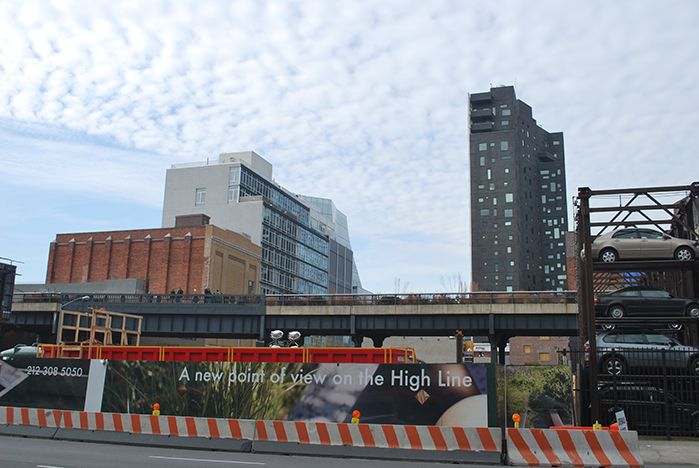
12.01.13.
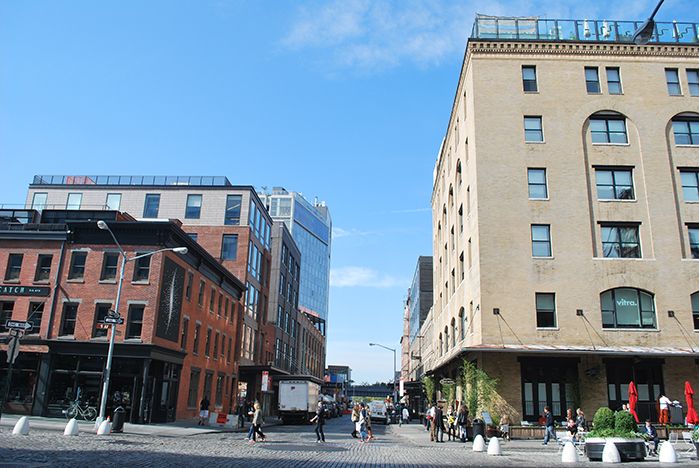
View of Gansevoort with the High Line in the background within the Meat Packing District. 10.14.13.
The entire area throngs with tourists. Many existing apartment buildings near the High Line have seen large increases in their appraisals; this, of course, benefits existing owners, but causes upheavals to renters who may not be able to afford significant rent increases.
The cost figures referenced are typical for the High Line neighborhood, and underscore how it is becoming an enclave for wealthy people and tourists, to the exclusion of long time residents, particularly renters who are forced to move from the neighborhoods which have been their home for decades. This pattern is occurring throughout the wide shadow of the High Line.
Additional High Line Economic Impacts Photos
That’s it for now. I hope that these different sections of text and images of the High Line will generate discussion.
Come back next time for Part 11 of “A Comparison of the Three Phases of the High Line, New York City: A Landscape Architect and Photographer’s Perspective” where I’ll discuss Restrictions and User Activities & Sustainability.
Steven L. Cantor
Photos © Steven L. Cantor are available for individual purchase.
Cumulative 14-part “A Comparison of the Three Phases of the High Line, New York City: A Landscape Architect and Photographer’s Perspective” Series End-notes
1. Ulam, Alex. “Back on Track,” Landscape Architecture Magazine. Volume 99, No. 10, October, 2009, p. 97.
2. http://www.thehighline.org/news/2012/01/24/major-milestone-for-the-high-line-at-the-rail-yards
3. http://www.thehighline.org/sustainability
4. http://www.thehighline.org/design/planting
5. Ulam, Alex. “Back on Track,” Landscape Architecture Magazine. Volume 99, No. 10, October, 2009, p. 97 and 105-106. He refers to an article in the New York Post.
6. David, Joshua, Reclaiming the High Line, a project of the Design Trust for Public Space with Friends of the High Line. Karen Hock, editor, (New York, Ivy Hill Corporation and others, 2002). p.7.
7. http://www.thehighline.org/about/ask-a-gardener
8. http://untappedcities.com/2013/10/17/live-blog-from-2013-mas-summit-for-nyc-day-1/
http://untappedcities.com/2012/04/26/partners-in-preservation-the-high-line-section-3/
http://untappedcities.com/2013/11/13/spur-the-third-section-of-the-high-lines-crown-jewel-a-nest-in-the-sky/ (by Bhushan Mondkar)
Publisher’s Note:
See Steven L. Cantor’s ENTIRE 14-part “A Comparison of the Three Phases of the High Line, New York City: A Landscape Architect and Photographer’s Perspective” Series.
Steven L. Cantor, Landscape Architect

Photo by Thomas Riis.
Steven L. Cantor is a registered Landscape Architect in New York and Georgia with a Master’s degree in Landscape Architecture from the University of Massachusetts, Amherst. He first became interested in landscape architecture while earning a BA at Columbia College (NYC) as a music major. He was a professor at the School of Environmental Design, University of Georgia, Athens, teaching a range of courses in design and construction in both the undergraduate and graduate programs. During a period when he earned a Master’s Degree in Piano in accompanying, he was also a visiting professor at the College of Environmental Design at the University of Colorado, Boulder. He has also taught periodically at the New York Botanical Garden (Bronx) and was a visiting professor at Anhalt University, Bernberg, Germany.
He has worked for over three decades in private practice with firms in Atlanta, GA and New York City, NY, on a diverse range of private development and public works projects throughout the eastern United States: parks, streetscapes, historic preservation applications, residential estates, public housing, industrial parks, environmental impact assessment, parkways, cemeteries, roof gardens, institutions, playgrounds, and many others.
Steven has written widely about landscape architecture practice, including two books that survey projects: Innovative Design Solutions in Landscape Architecture and Contemporary Trends in Landscape Architecture (Van Nostrand Reinhold, John Wiley & Sons, 1997). His book Green Roofs in Sustainable Landscape Design (WW Norton, 2008), provides definitions of the types of green roofs and sustainable design, studies European models, and focuses on detailed case studies of diverse green roof projects throughout North America. In 2010 the green roofs book was one of thirty-five nominees for the 11th annual literature award by the international membership of The Council on Botanical & Horticultural Libraries for its “outstanding contribution to the literature of horticulture or botany.”
Steven’s most recent book is Professional and Practical Considerations for Landscape Design (Oxford University Press, 2020) where he explains the field of landscape architecture, outlining with authority how to turn drawings of designs into creative, purposeful, and striking landscapes and landforms in today’s world.
He has been a regular attendee and contributor at various ASLA, green roofs and other conferences in landscape architecture topics.
In recent years Steven has had more time for music activities, as a solo pianist and accompanist. In 2011 he performed a solo piano program at the Winter Rhythms festival at Urban Stages Theater. He’s a regular performer at musicales hosted in Chelsea and other settings in Manhattan. On August 25, 2013, Leonard Bernstein’s birthday, he performed with Stephen Kennedy Murphy a program of excerpts from the composer’s MASS and Anniversaries.
Steven joined the Greenroofs.com editorial team in December, 2013 as the Landscape Editor. In February, 2015 he completed his 14-part series “A Comparison of the Three Phases of the High Line, New York City: A Landscape Architect and Photographer’s Perspective.”
 Greenroofs.comConnecting the Planet + Living Architecture
Greenroofs.comConnecting the Planet + Living Architecture
